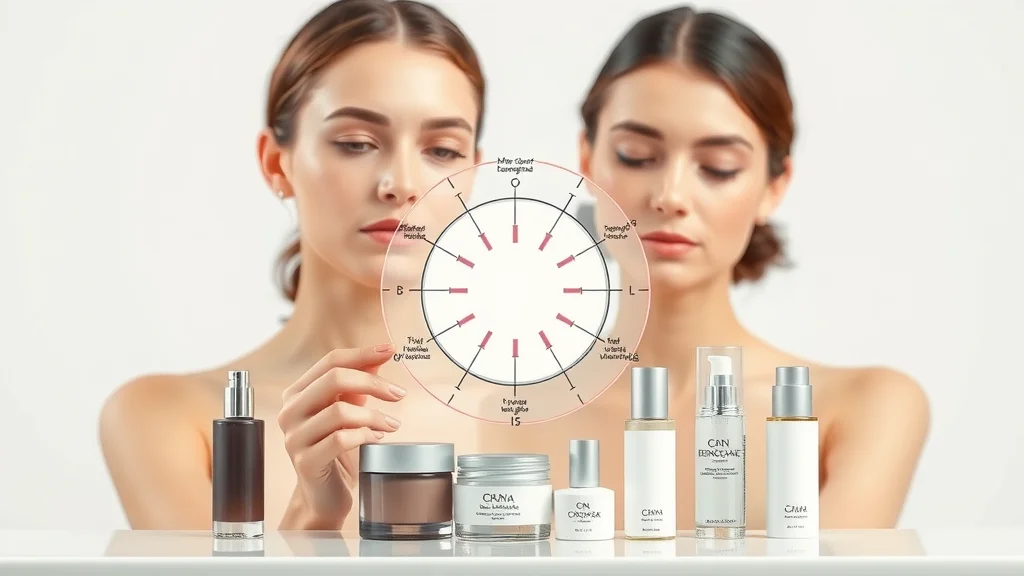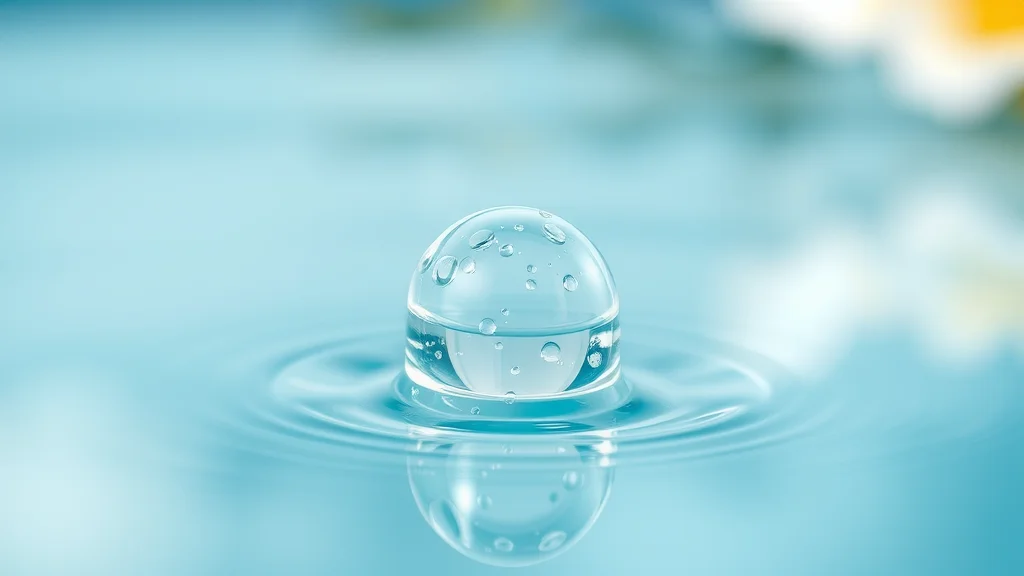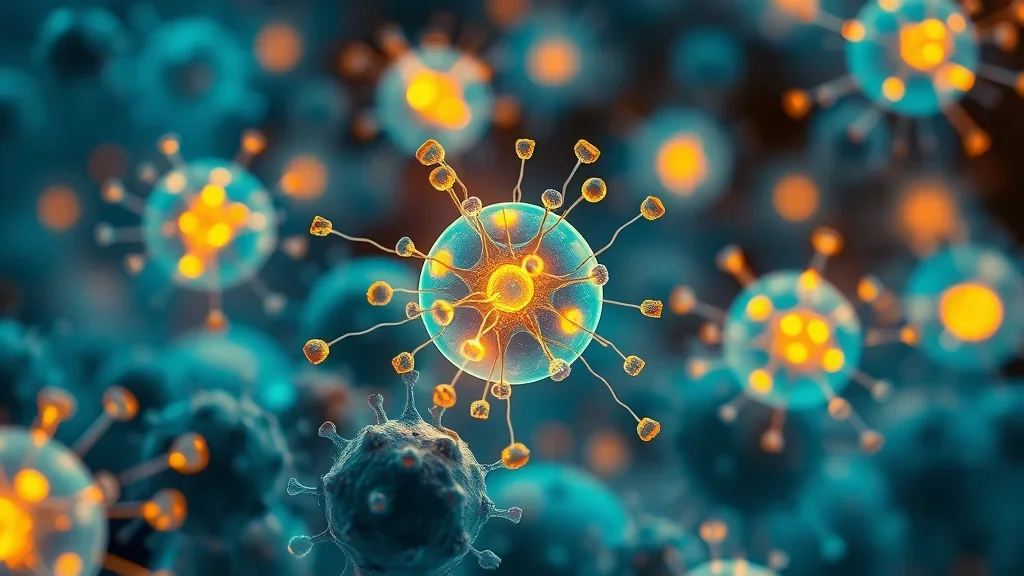Did you know? Nearly 80% of women experience cyclical changes to their skin each month, yet most follow the same skincare routine day in and day out. Syncing skincare with your hormones isn't just a new beauty trend—it's a science-backed approach that can dramatically boost your complexion, tackle hormonal acne, and help you glow through every phase of your menstrual cycle. Dive in to learn how you can revolutionize your skin by listening to your body’s natural rhythms!
Startling Fact: How Syncing Skincare with Your Hormones Transforms Your Complexion
Understanding your menstrual cycle isn’t just about fertility or reproductive health—it’s the secret sauce in designing a skincare routine that really works month long. Each phase of your cycle triggers unique shifts in hormone levels, particularly estrogen and progesterone, which can dramatically affect your skin, from its glow to how prone you are to hormonal acne. By syncing skincare with your hormones, you’ll learn when to pamper, protect, or purify your skin for visibly healthier results. This targeted approach takes the guesswork out of your care routine and meets your skin’s changing needs, effectively tackling challenges like oily skin, dryness, breakouts, or dullness as they arise. In this comprehensive guide, you’ll understand the science behind cycle syncing, master ingredient swaps for every phase, and get pro tips to combat stubborn skin concerns—all tailored to your unique monthly rhythm. Prepare for a skincare game-changer.

Understanding the Science: Why Sync Skincare with Your Hormones?
Our skin is more than our body’s barrier; it is a mirror, reflecting internal changes—especially hormonal shifts. As women move through their menstrual cycle, estrogen and progesterone levels rise and fall, impacting oil production, skin barrier integrity, and collagen production. For example, surges in estrogen just before ovulation give your complexion a luminous glow, while plummeting progesterone levels before your period can spark hormonal acne and sensitivity. The idea behind cycle syncing skincare is simple: if you adapt your routine in harmony with your body’s hormonal tides, you can address issues before they start. Clinical research shows that recognizing your skin’s cyclical changes can reduce inflammation, lessen breakouts, and help you preserve a strong, healthy skin barrier. Ultimately, syncing your skincare isn’t just about addressing problems—it’s about supporting your skin at its healthiest, every single day of your cycle.
-
What You'll Learn
What is cycle syncing for your skin
The phases of the menstrual cycle that affect your skincare routine
Ingredients and routine adjustments for each hormonal phase
Expert tips to optimize syncing skincare
Addressing hormonal acne and common skin concerns
The Basics: What Does It Mean to Sync Skincare with Your Hormones?
To sync skincare with your hormones means more than just switching up your cleanser when a breakout appears. It’s a month-long strategy based on understanding the key phases of your cycle—menstrual, follicular, ovulation, and luteal—and anticipating how each shift in hormone levels impacts your skin. During the follicular phase, for example, rising estrogen supports collagen production and minimizes oil production, so your skin is clearer. At ovulation, your skin might be most radiant but more prone to excess oil and blocked pores. In the second half of your cycle, as progesterone levels peak, breakouts, sensitivity, and inflammation often ramp up. By aligning your care routine with these changes, you’re no longer fighting your skin’s biology—you’re working with it. This approach is relevant for every skin type, ensuring even those with dry, sensitive, or oily skin can benefit from a personalized approach.
Cycle Sync and Skincare Routine Fundamentals
Cycle syncing your skin involves tracking your cycle’s phases and mapping your skincare routine to each hormonal change. It’s about remembering that no two weeks are ever the same: the products and ingredients that boost glow one week might disrupt your skin barrier the next. Building a cycle syncing skincare routine starts by identifying the beginning of your period (the menstrual phase), then anticipating how estrogen and progesterone will change over the next 28 days. You’ll focus on gentle hydration during your period, use antioxidants and lightweight moisture after, incorporate sebum-controlling actives at ovulation, and tackle inflammation and breakouts in the luteal phase. The result? A dynamic, responsive plan that reflects what your skin truly needs—no more, no less.

How Your Menstrual Cycle Affects Your Skin
Your menstrual cycle has a powerful impact on how your skin looks and feels. From menstruation through ovulation and into the luteal phase, hormone levels change profoundly, influencing oil production, inflammation, collagen production, and skin cell turnover. This shifting landscape is why your skin type may seem to alter: dry and sensitive one week, oily and breakout-prone the next. Recognizing these hormonal shifts not only explains former care routine frustrations but also opens the door to preemptive, personalized skin solutions. Whether you suffer from hormonal acne, persistent dryness, or sudden dullness, the answer often lies in understanding—and predicting—your body’s natural rhythms.
Phases of the Menstrual Cycle and Their Impact on Skin
Let’s break down how each phase of the cycle sync affects your skin so you can anticipate what’s coming and respond with a targeted, effective skincare routine. Hormone levels fluctuate over roughly 28 days, guiding everything from your skin’s radiance to its reactivity and oiliness. By reviewing the science, you can strategically adjust your cycle syncing skin plan at each pivotal moment.
Menstrual Cycle Phase |
Key Hormones |
Skin Changes |
Suggested Skincare Routine |
|---|---|---|---|
Menstrual |
Estrogen/Progesterone drop |
Sensitivity, dryness |
Gentle, hydrating care |
Follicular |
Rising estrogen |
Clarity, glow |
Lightweight, antioxidant-rich |
Ovulation |
Peak estrogen |
Increased oil, glow |
Exfoliation, sebum control |
Luteal |
Progesterone increase |
Breakouts, oiliness |
Soothing, anti-acne, hydration |
Cycle Sync: Adapting Your Skincare Routine Throughout Your Menstrual Cycle
Adapting your skincare routine for each phase of your menstrual cycle allows you to truly work with your body. Instead of sticking with a generic regimen and hoping for the best, you can address hormonal acne, flare-ups of oily skin, or phases of dryness with strategic timing. Let’s explore what cycle syncing your skincare looks like, step by step, through the follicular, ovulation, luteal, and menstrual phases.
Follicular Phase: Optimizing Care Routine and Syncing Skincare
During the follicular phase (starting just after your period and lasting about 7–10 days), estrogen levels climb, spurring collagen production and boosting cell turnover. This is the window when your skin feels most resilient and glowy, allowing you to introduce antioxidant-rich serums (like Vitamin C or niacinamide) and try gentle exfoliation. Your skin barrier is strong, clarity peaks, and visible glow is high, so opt for lightweight, hydrating formulas that won’t weigh you down. This is a key moment for cycle sync adjustments—nourish while maintaining balance. Don’t forget SPF, as increased collagen makes your skin more sensitive to sun.

Ovulation Phase: Best Practice for Cycle Syncing Skincare
The ovulation phase (the midpoint of your cycle, around day 14 in a typical 28-day cycle) is marked by peak estrogen. Your skin is often luminous but can become oilier due to increased sebaceous gland activity. Now’s the time to focus on exfoliation with a gentle BHA or clay mask to keep pores clear, regulate oil production, and maintain that enviable glow. Be careful not to overdo actives, which can disrupt the skin barrier. If you’re noticing visible pores or feeling a bit greasy, light moisturizers and mattifying products keep skin looking fresh. This is the best week for brightening treatments and targeting pigmentation left over from breakouts.
Luteal Phase: Combatting Hormonal Acne and Skin Changes
As your cycle moves into the luteal phase (the second half, typically days 15–28), progesterone levels rise, and oil production ramps up. Many experience hormonal acne, redness, and skin that feels irritated. Here, cycle syncing skincare is all about soothing inflammation, hydrating, and using targeted anti-acne treatments. Key ingredients include salicylic acid for clearing pores, centella asiatica to reduce irritation, and probiotics to strengthen your skin barrier. Hydration remains vital, even if your skin is oily, to prevent rebound excess oil. Focus on calming products and avoid harsh scrubs or over-exfoliation.

Menstrual Phase: Gentle Syncing of Your Skincare Routine
During your period, both estrogen and progesterone levels plummet, making skin sensitive, reactive, or dry. Now is the time for ultimate gentleness: opt for ceramides, hyaluronic acid, and restorative creams that lock in moisture and help repair the skin barrier. Avoid retinoids, harsh exfoliants, or stripping cleansers, which can worsen irritation. If you experience inflammation or breakouts during this week, use targeted topical actives sparingly. The goal is to nourish and restore, setting the foundation for glowing skin as your next follicular phase begins.
Essential Ingredients for Syncing Skincare with Your Hormones
Ingredient selection can make or break your cycle syncing skincare strategy. Each phase calls for a tailored approach: hydrating hero ingredients during menstruation and luteal phase; antioxidants and sebum-regulators at ovulation and follicular. By understanding which actives support your skin through specific hormonal shifts, you can optimize results, avoid common irritants, and nourish your skin’s natural resilience all month long.
Spotlight: Hyaluronic Acid and Hormonal Skin Needs
Hyaluronic acid is a month-long must-have, but it’s especially powerful during menstruation or in the luteal phase, when skin loses water easily and feels parched. This powerhouse ingredient draws moisture into the skin barrier, keeping dryness, flakiness, and dullness at bay without causing oiliness or irritation. It’s also perfect for every skin type, seamlessly boosting hydration and prepping your skin for other actives. Look for serums or moisturizers with multi-molecular hyaluronic acid to maximize their impact when syncing skincare with your hormones.

Estrogen and Progesterone: Choosing the Right Ingredients
The influence of estrogen and progesterone on your skin means you need ingredients that change with each phase of your cycle. When estrogen is high (follicular/ovulation), skin benefits from antioxidants like Vitamin C, niacinamide, and gentle exfoliants to support radiance and lighten pigmentation. As progesterone rises (luteal phase), turn to salicylic acid for blemish control, centella asiatica to calm inflammation, and probiotics to fortify the skin barrier. Lastly, when both hormones plummet (menstrual phase), focus on healing ingredients—ceramides, hyaluronic acid, and soothing barrier creams are your best friends for restoring and repairing sensitive skin.
-
Top Ingredients by Cycle Phase
Menstrual: Ceramides, hyaluronic acid
Follicular: Vitamin C, niacinamide
Ovulation: Clay, BHA exfoliant
Luteal: Salicylic acid, centella asiatica, probiotics
Watch: “Expert Explains: The Science of Cycle Syncing Skincare”
How to Customize Your Care Routine Using Cycle Syncing
The real magic of syncing your skincare comes from reflecting your unique skin type, sensitivities, and lifestyle—not just your cycle. Here’s how: track your menstrual cycle for at least two months, note when your skin feels oily, sensitive, or breakout-prone, and revisit the four phases and their recommended ingredients. Use a simple journal or an app to set care routine reminders. Layer in your favorite products and make ingredient swaps as your body shifts. If you introduce a new step (like a salicylic acid treatment or probiotic serum), patch test, then gradually increase use during your most breakout-prone phase. Customizing your cycle syncing routine means more than just reacting to symptoms—it’s about preempting them.
"Adapting your skincare to hormonal shifts isn’t just a trend – it’s a research-backed approach to promote long-term skin health." – Dr. Leyla Afshar, Dermatologist
Addressing Specific Concerns: Hormonal Acne and Other Challenges
Hormonal acne is one of the most persistent—and frustrating—skin issues linked to your menstrual cycle. It usually appears around the jawline, chin, and lower face, often peaking right before your period as progesterone levels rise and drop. These breakouts can be deep, inflamed, and slow to heal, meaning a standard routine may fall short. Other challenges include excess oil, sudden dryness, or red, sensitive patches. Effective cycle syncing highlights preventative swaps—like using a salicylic acid spot treatment only during your luteal phase, or prioritizing hyaluronic acid moisturizer when you know your skin will be dry.
Hormonal Acne: Signs, Prevention, and Syncing Your Skincare
Signs of hormonal acne include breakouts tied to your cycle, cystic acne that flares before your period, and blemishes along your jawline and chin. To prevent them, focus on non-comedogenic, soothing ingredients, resist over-washing (which can damage the skin barrier), and introduce actives like salicylic acid or topical benzoyl peroxide in your luteal phase. Syncing your skincare for hormonal acne means tracking breakouts on your cycle calendar and dialing your routine up or down accordingly, aiming for balance rather than aggression—your skin will thank you.

People Also Ask | What is the 4 2 4 rule in skincare?
Exploring the Origins and Effectiveness of the 4 2 4 Skincare Method in Syncing Skincare with Your Hormones
The 4 2 4 rule in skincare originated from Korean beauty routines. It refers to massaging a cleansing oil onto your face for 4 minutes, then a foam/lotion cleanser for 2 minutes, and rinsing for 4 more—a method designed to deeply cleanse while respecting your skin barrier. In the context of syncing your skincare, this routine is especially helpful during menstruation and luteal phases, when your skin is more prone to sensitivity or breakouts. The extended massage time improves circulation and helps clear debris without stripping the skin. Ultimately, pairing the 4 2 4 method with appropriate cycle syncing products boosts efficacy, especially if you’re cycling through oily and sensitive phases.
People Also Ask | Can skincare affect your hormones?
Understanding the Impact of Skincare Ingredients on Your Hormones While Syncing Your Skincare
Most skincare products work at the surface level and don’t directly shift systemic hormone levels. That said, certain ingredients—such as some endocrine disruptors (like parabens or phthalates)—have been linked to minor hormonal effects over time if used in excess. When focusing on syncing your skincare, the main concern isn’t that products will alter your hormones, but that your hormone levels will change what your skin needs. Opting for clean, evidence-backed ingredients helps you avoid unnecessary irritation and maintains your skin’s long-term health, safely supporting your cycle syncing routine.
People Also Ask | What are the signs of hormonal imbalance on the face?
Recognizing Facial Indicators and Syncing Skincare to Address Hormonal Imbalance
Signs of hormonal imbalance on the face include unexpected oily skin, persistent hormonal acne (especially along the jawline and cheeks), hyperpigmentation, increased sensitivity, redness, or unusually dry and flaky skin—often appearing or worsening just before or during your period. Syncing your skincare involves watching for these changes, tracking when they appear, and reinforcing your routine with specific actives as each symptom peaks. Over time, this helps ease the signs of imbalance and leads to healthier, more consistent skin all cycle long.
People Also Ask | How to balance hormones to improve skin?
Practical Steps to Support Hormone Balance for Clearer Skin When Syncing Skincare
While topical products help a lot, balancing hormones for better skin also requires lifestyle tweaks: manage stress (since cortisol can disrupt other hormone levels), maintain a diet rich in antioxidants and healthy fats, and get regular exercise. Track your menstrual cycle to correlate flare-ups with hormonal dips or spikes, and use this insight for cycle syncing. If symptoms like persistent acne or sudden rashes persist, consult with a healthcare provider for deeper insights—sometimes, addressing thyroid, polycystic ovary syndrome, or nutritional deficiencies can be key to clearer, balanced skin.
Watch: “Step-by-Step: Implementing a Sync Skincare with Your Hormones Plan”
FAQs on How to Sync Skincare with Your Hormones
How do I start syncing my skincare with my hormones?
Begin by tracking your cycle and making simple swaps: use gentle, hydrating products during your period; antioxidants and brightening treatments after; exfoliants and oil controllers around ovulation; and soothing, anti-acne actives just before your period. Test one change at a time, monitor results, and adjust monthly as your symptoms become predictable.Does cycle syncing work for all skin types?
Yes! Every skin type can benefit since hormone levels impact oil production, sensitivity, and healing, no matter your baseline. For dry or mature skin, cycle syncing boosts hydration; for oily or acne-prone skin, it targets breakouts and calms inflammation without over-drying.Can I use retinol and other strong actives while syncing skincare?
Use strong actives thoughtfully—these are best introduced when your skin barrier is strongest (follicular/early ovulation). Avoid during your period or luteal phase when skin is sensitive and more prone to reaction or dryness.Will syncing my skincare help with cystic acne?
Absolutely. While severe cystic acne may need a dermatologist’s care, many cycling women see fewer or less severe breakouts by aligning anti-acne actives with their cycle’s luteal phase and focusing on skin barrier support during menstruation.What’s the fastest way to see results?
Track your routine and symptoms for 2–3 cycles. Most notice improvements (fewer breakouts, less dryness, more glow) within the first two months of consistent cycle syncing.
Expert Tips and Key Takeaways: How to Successfully Sync Skincare with Your Hormones
Your hormones greatly affect your skin. Cycle syncing can optimize your care routine.
Each phase of the menstrual cycle requires distinct skincare adjustments.
Consistency and ingredient awareness are crucial in syncing your skincare.
Respond to hormonal acne with targeted actives.
Consult with professionals for severe skin or hormonal concerns.
Ready to Sync Skincare with Your Hormones? Start Designing Your Personalized Routine Today!
Take control of your skin’s health—track your cycle, review your skincare shelf, and start syncing today for real, glowing results all month long!
 Add Row
Add Row  Add
Add 




Write A Comment